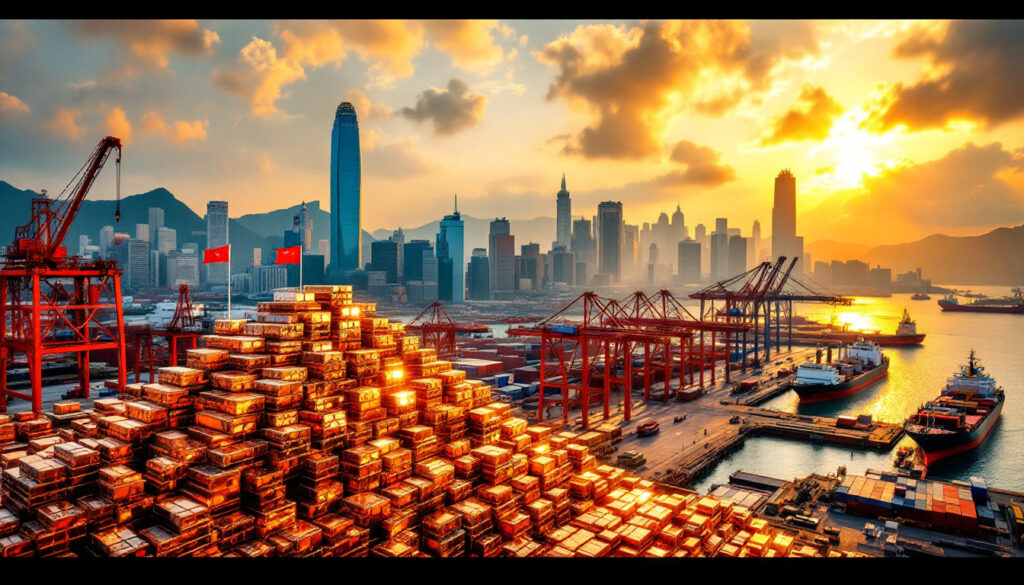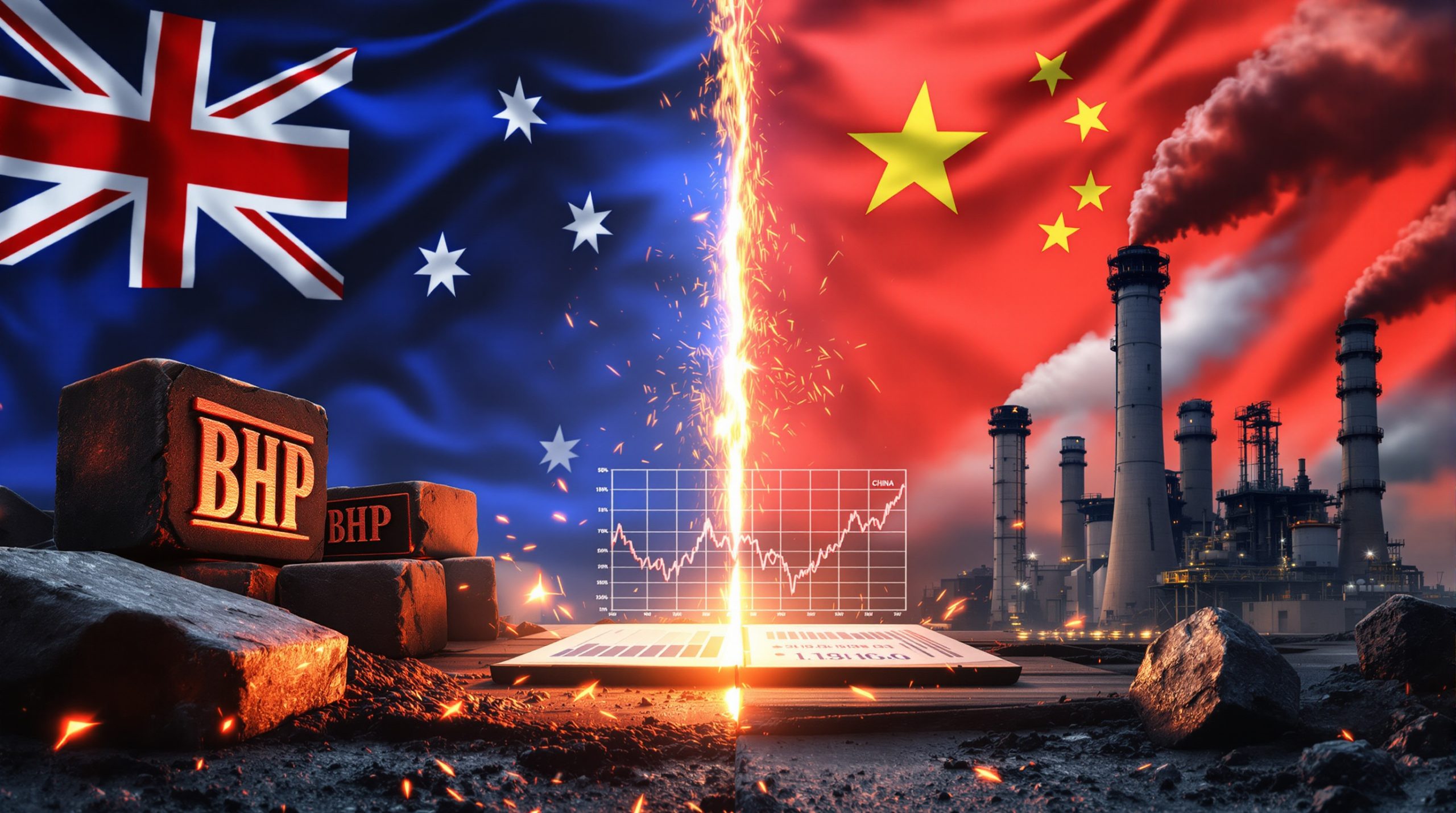LME Approves Warehouses in Hong Kong: Strategic Expansion into Asia's Financial Hub
The London Metal Exchange (LME) has approved its first four licensed warehouse facilities in Hong Kong, marking a significant step in its decade-long strategy to deepen ties with mainland China. This expansion aims to leverage Hong Kong's position as a gateway to the world's largest consumer of industrial metals while addressing commercial challenges tied to high operating costs and market dynamics. The approval of warehouses operated by GKE Metal Logistics, Henry Diaper & Co, and PGS East Asia—partnering with major Chinese logistics firms—reflects a calculated bet on Hong Kong's role in regional metal flows. However, skepticism persists about the viability of storage facilities in a non-consumption hub, compounded by storage rates 20% higher than in neighboring markets.
What is the London Metal Exchange (LME)?
Historical Significance and Global Role
The London Metal Exchange, established in 1877, is the world's oldest and largest regulated marketplace for industrial metals, facilitating over $15 trillion in annual trading volume. As the primary global price-setting mechanism for metals like copper, aluminum, and zinc, the LME's benchmark prices influence supply chains across manufacturing, construction, and energy sectors. Its warehouse network spans 32 strategic locations, including major ports in Europe, Asia, and the Americas, holding approximately 10 million metric tons of metals at any given time.
Price Discovery and Market Stability
The LME's open-outcry trading system, combined with electronic platforms, ensures real-time price transparency. For example, copper prices on the LME serve as the reference for contracts worldwide, affecting industries from electronics to renewable energy infrastructure. The exchange's warehousing system, which requires licensed facilities to maintain strict quality controls, provides physical backing for futures contracts, reducing counterparty risk.
Why Has the LME Expanded to Hong Kong?
Strategic Alignment with Chinese Demand
Since its acquisition by Hong Kong Exchanges and Clearing (HKEX) in 2012 for £1.4 billion ($1.8 billion), the LME has prioritized bridging international markets with China, which accounts for 55% of global base metal consumption. CEO Matthew Chamberlain emphasized that "Hong Kong is now well-positioned to further develop as a key global metals hub servicing the region," highlighting its unique role as a special administrative region with legal and financial systems compatible with global traders. The move aligns with China's Belt and Road Initiative, which necessitates robust logistics for raw material inflows and finished goods exports.
Regulatory and Infrastructure Advantages
Hong Kong's absence of import tariffs on metals and its status as a free port simplify customs procedures compared to mainland China. Additionally, its financial infrastructure—including the HKEX's Connect programs—enables seamless cross-border capital flows. The LME's long-term vision includes eventual warehouse approvals in mainland cities like Shanghai, contingent on regulatory reforms to align with international storage standards and address China export restrictions that have recently affected global markets.
Which Warehouse Operators Received Approval?
Licensed Operators and Local Partnerships
The LME approved two warehouses under GKE Metal Logistics, one under Henry Diaper & Co, and one under PGS East Asia. These firms partnered with Chinese logistics giants:
- China Resources Logistics Ltd (state-owned enterprise with 1,200+ facilities in China)
- Sinotrans Warehousing Ltd (subsidiary of Sinotrans Limited, handling 30% of China's bulk cargo)
- SF Supply Chain Ltd (affiliated with SF Express, a leader in e-commerce logistics).
Operational Synergies
GKE's integration with China Resources leverages后者's extensive storage network in Guangdong, a manufacturing hub. Sinotrans' involvement ensures seamless rail and port connectivity to inland provinces, while SF Supply Chain's tech-driven logistics solutions align with Just-in-Time delivery demands and mining digital transformation trends reshaping the industry.
What Are the Commercial Challenges for Hong Kong Warehouses?
Cost Competitiveness Concerns
Hong Kong's storage rates for copper are set at $0.61 per metric ton, exceeding rates in South Korea ($0.51) and Singapore ($0.51). High real estate costs—warehouse rents average $14 per square foot annually, triple those in Johor Bahru, Malaysia—pressure operators to seek subsidies. A 2023 LME internal analysis estimated that without government support, Hong Kong's storage costs would remain 15–20% above regional peers.
Market Dynamics and Metal Flows
As Hong Kong lacks significant metal-consuming industries, warehouses primarily serve transit purposes. A warehousing executive noted, "Any metal stored here would quickly move to mainland China," raising questions about long-term inventory retention. Over 80% of China's copper imports are destined for factories in Zhejiang and Jiangsu provinces, suggesting Hong Kong's role as a staging ground rather than a final destination. Understanding global commodities insights becomes crucial for stakeholders navigating these complex trading relationships.
How Will the New Warehouses Operate?
Integration with Global Networks
Starting July 15, 2025, the Hong Kong facilities will adhere to LME's global operational protocols, including daily inventory reporting and quarterly audits. Metals accepted include Grade A copper, primary aluminum, and zinc, with stringent purity certifications required. The warehouses will link to the LME's SWORD delivery system, enabling real-time stock transfers between locations.
Subsidy Negotiations and Cost Mitigation
Although the Hong Kong government has not formalized subsidies, industry sources indicate negotiations for tax incentives or land grants. Warehouse operators anticipate marginal costs below market rates through volume-based discounts from logistics partners. For example, SF Supply Chain's partnership with SF Express could reduce last-mile delivery costs by 12–15%.
What Does This Mean for the Global Metals Market?
Shift in Regional Trade Patterns
Hong Kong's warehouses are poised to capture metal flows diverted from South Korea and Taiwan, which together hold 18% of LME-registered Asian stockpiles. Traders may prioritize Hong Kong for its proximity to Guangdong's manufacturing clusters, potentially reducing shipping times by 2–3 days compared to Singapore. Furthermore, developing iron ore volatility strategies will be essential as these new warehouses impact regional metal pricing dynamics.
Price Arbitrage Opportunities
The expansion could narrow the price gap between LME and Shanghai Futures Exchange (SHFE) copper contracts, which averaged $120/metric ton in 2024. Increased arbitrage activity may enhance liquidity, though market participants caution about regulatory hurdles in moving metal across the Hong Kong-mainland border. According to a Reuters report, these developments could significantly reshape logistics for metals flowing into the Chinese mainland.
Future Expansion into Mainland China
The LME's 2030 roadmap includes pilot warehouses in Shanghai's Free Trade Zone, pending approval from Chinese regulators wary of ceding pricing influence. Success in Hong Kong could accelerate this timeline, with analysts projecting 5–7 mainland facilities by 2035. Investors developing geopolitical market strategies will need to monitor these developments closely.
FAQs About LME's Hong Kong Warehouses
What types of metals can be stored in LME's Hong Kong warehouses?
The Hong Kong facilities are approved to store all LME-tradable metals, including copper, aluminum, zinc, lead, nickel, and tin. Each metal must meet strict grade specifications, with copper requiring 99.99% purity and aluminum needing 99.7% minimum purity to qualify for LME warrants.
How does the approval of Hong Kong warehouses affect metal prices?
The new warehouses may reduce regional price premiums by increasing storage options closer to Chinese consumers. Physical delivery premiums in East Asia could decrease by 3-5% as logistics bottlenecks ease. However, the primary price discovery function will remain with the LME's central trading platforms in London.
What are the advantages for metal traders using LME warehouses in Hong Kong?
Traders benefit from reduced transit times to mainland China, enhanced financing options through Hong Kong banks, and potential tax advantages from Hong Kong's free port status. Additionally, the legal certainty provided by Hong Kong's common law system offers greater protection for metal ownership rights compared to some regional alternatives.
How do LME warehouses differ from non-LME storage facilities?
LME warehouses operate under stringent protocols governing metal quality, warehouse security, and inventory reporting. They must maintain minimum insurance requirements, submit to regular audits, and guarantee delivery within specified timeframes. Non-LME facilities typically have more flexible requirements but cannot issue LME warrants, which are essential for contract settlement.
What security and quality control measures are in place at LME warehouses?
All Hong Kong facilities feature 24/7 monitoring, restricted access zones, and detailed chain-of-custody documentation. Each metal lot undergoes verification against LME standards upon arrival, with random sampling for composition testing. The warehouses must maintain complete traceability records linking warrants to specific physical metal locations within the facility.
Conclusion
The LME approves warehouses in Hong Kong representing a strategic bet on Asia's evolving metal trade dynamics, balancing geopolitical realities with commercial pragmatism. While operational challenges persist, the partnerships with state-backed logistics firms and HKEX's financial clout provide a credible foundation. As detailed by Bloomberg, this expansion seeks to attract mainland Chinese customers to the global metal trading platform. As global supply chains decouple, Hong Kong's hybrid East-West identity positions it to mediate between international markets and China's insatiable demand. The next five years will test whether this gateway can transcend its transit role to become a pricing node in its own right.
Want to Profit from the Next Major Mineral Discovery?
Discover how significant mineral discoveries can lead to substantial market returns by exploring Discovery Alert's dedicated discoveries page, where their proprietary Discovery IQ model provides real-time alerts on promising ASX announcements before the broader market reacts.




